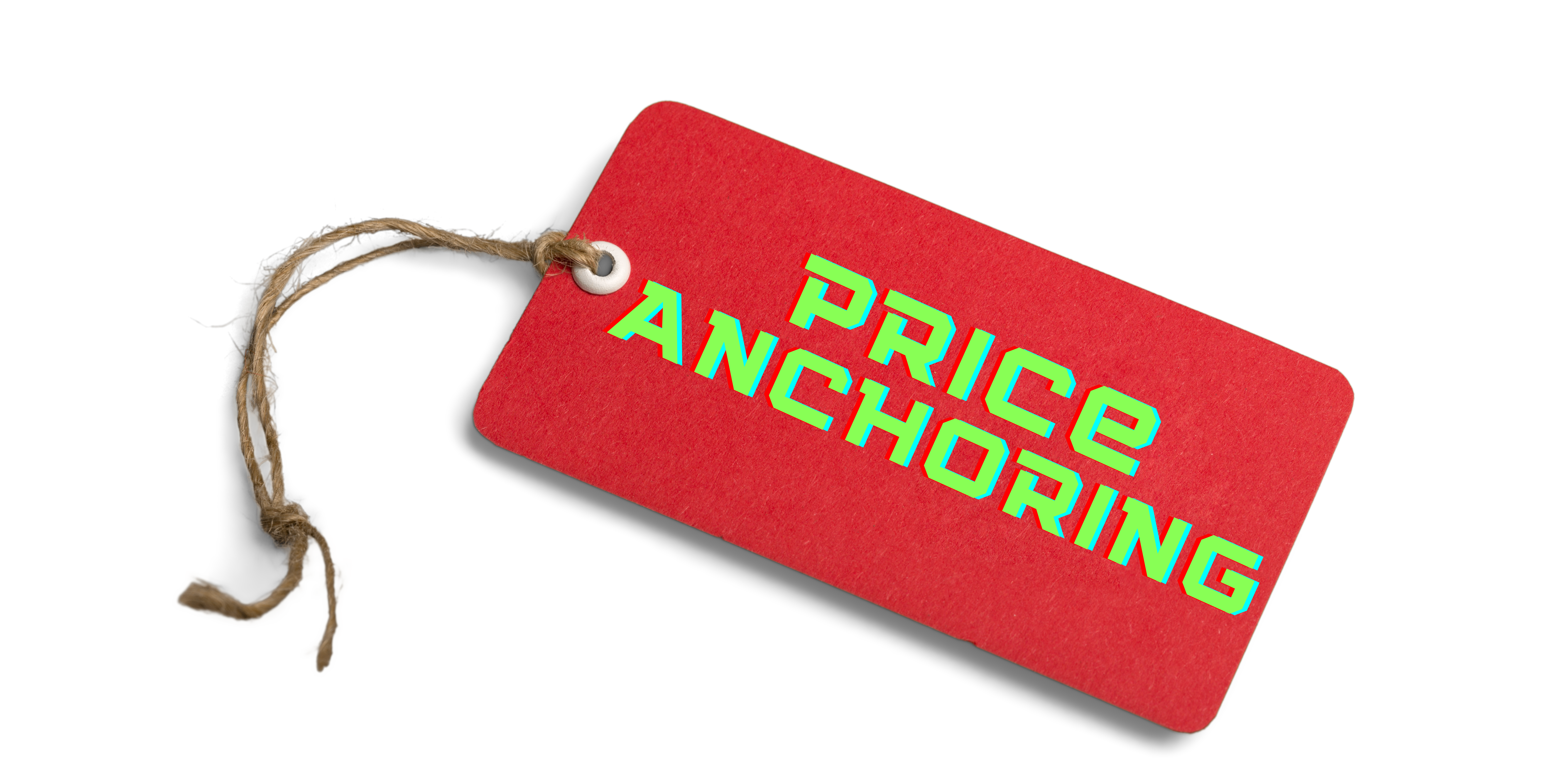Is it time to reconsider your pricing strategy for maximum impact on consumer behavior? Many small businesses often fall into the trap of setting prices based solely on their financial needs and perceived fairness to customers, neglecting the psychological aspects of pricing. In this article, we explore the concept of anchor pricing and present four effective tactics to enhance your pricing strategy.
For a longer explanation for what price anchor is, go to our detailed price anchoring blog post here.
Understanding Anchor Pricing

Before delving into specific tactics, let’s grasp the concept of anchor pricing. Human decision-making tends to rely heavily on available information, particularly when it comes to determining the value of a product or service. The relative nature of price becomes evident—something is considered cheap or expensive only in comparison to another option. Anchor pricing involves strategically using reference points to influence consumer perceptions and guide their purchasing decisions.
Tactics to Leverage Anchor Pricing

1. Retail Prices Display
Always showcase the product’s retail price on your product page, crossed out with your discounted price displayed alongside. If your product lacks a specific retail price, provide a range to establish a reference point for potential buyers.
2. Average Service Price Transparency
For service-based businesses, employ a similar approach by displaying the average cost for the service on your pricing page. This creates a clear anchor point for customers to assess the value of your offerings.
3. Competitive Price Comparison
Highlight your competitors’ prices for relativity, ensuring your price is lower. Emphasize the unique benefits of your product or service to divert attention from the price alone. Be prepared for potential counterattacks from competitors, especially if they have a larger presence and marketing budget.
4. The Package Comparison Strategy
Craft a strategic price comparison for your products or services by presenting different packages. Place the ideal package in the middle, a slightly cheaper option with fewer features to the left, and a more expensive package with additional features to the right. Guide customers towards the middle package, emphasizing its affordability and value.
Conclusion
Effective anchor pricing goes beyond setting prices based solely on cost and profit margins. By incorporating these tactics, businesses can tap into the psychological aspects of consumer decision-making, influencing perceptions and guiding customers towards more favorable purchasing decisions. Consider integrating these strategies into your pricing model to enhance your business’s overall competitiveness and profitability.
Connect with Frostbolt Digital Media
If you’re interested in implementing anchor pricing techniques for your company, feel free to reach out to the Frostbolt Digital Media team for expert guidance and support. Contact us here.
